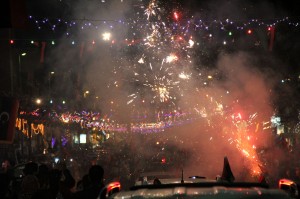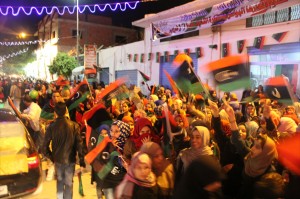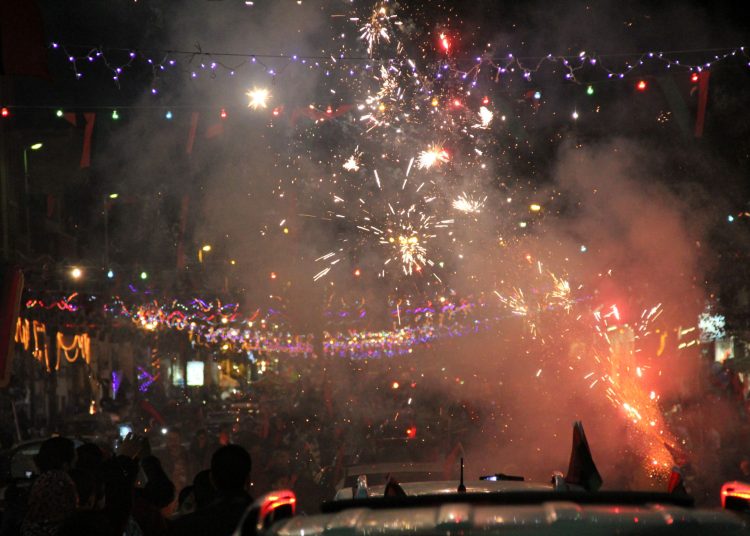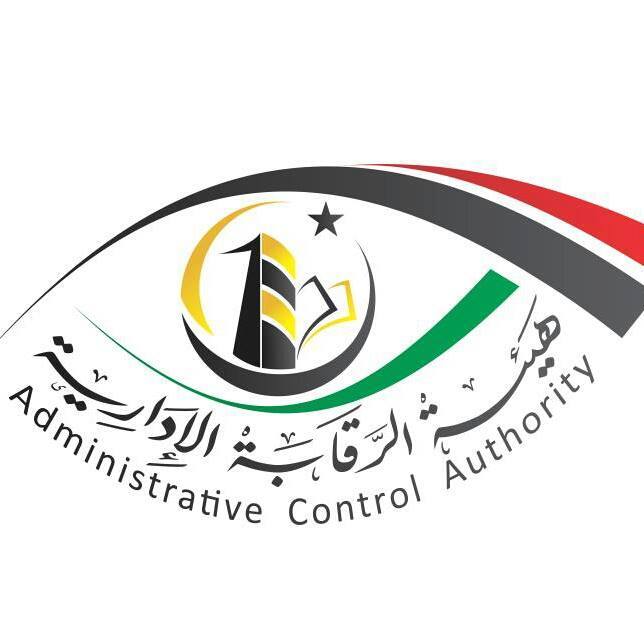By Nadia Elahmar and Sami Zaptia.

Tripoli, 18 February 2013:
Celebrations exploded on Saturday in the Fashloum district of Tripoli for the second . . .[restrict]anniversary of the Libyan 17th February Revolution in what seemed as clear defiance to those threatening to dampen celebrations by attempting to spread the fear of insecurity.
Fashloum, which was one of the first areas to rise up without fear against Qaddafi, cut a huge cake in the colours of the Libyan flag at the stroke of midnight.
Fashloum street, which is at least a couple of kilometers long, was totally closed from the Jamhuriya Street roundabout to the Jraba Street roundabout with men, women and children, letting-off fireworks, blowing car horns to blaring music and flashing lights – creating a euphoric atmosphere.
Dancing and singing in the street, to huge street-side speakers, was a familiar sight. Young boys distributed washeg (Arabic incense), sweets, chocolates and juice to walkers by and passing cars.
Women and families sat in family enclosures under street-side tents clapping and cheering every passerby. Fire flares, painted faces, face masks, florescent Qaddafi-like curly hair wigs, ornately decorated cars in the colours of the Libyan flag – all added to the carnival-like atmosphere.

Despite all the talk about security in the lead-up to the anniversary of the revolution, one woman enjoying the Fashloum celebrations mentioned how safe she felt in the street saying that it was for her “safer than any other day”.
During Qaddafi’s regime, people were forced to celebrate the so-called “popular revolution”. One passer-by wanted to emphasise that all the people that came out onto the streets were there because they wanted to celebrate the second anniversary of the 2011 Libyan revolution, “through their free will”.
It is also worth noting that the current Libyan authorities refused to set a budget for the celebrations, in contrast to the multi-million dinar budget that the Qaddafi regime used to set and pilfer for its celebrations.
In contrast, all of the celebratory paraphernalia was paid for by the public. Many streets organized money collections to create funds to buy flags, banners, street lights, fireworks and to hire chairs and tents etc.
It was truly a celebration by the people for the people.
[/restrict]







